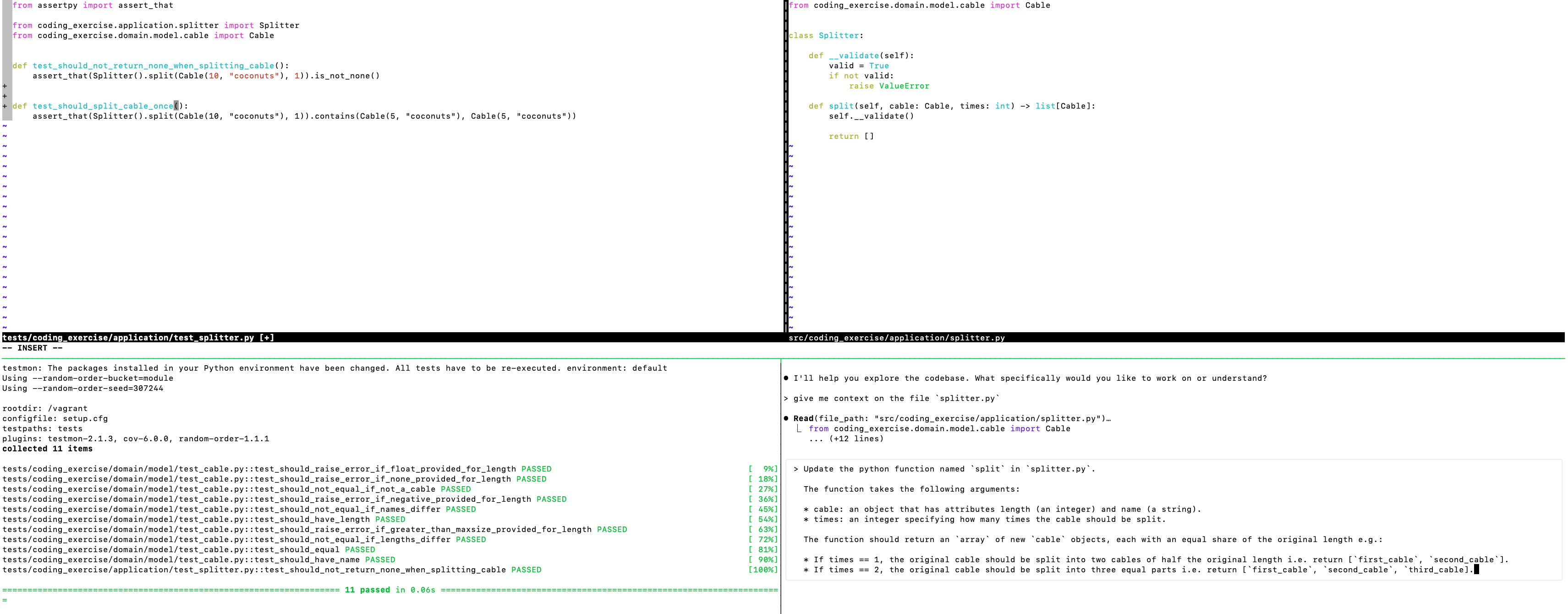Published on
Leveraging Generative AI for Research, Development, and Documentation
In my work as a Head of Engineering, I rely on generative AI to improve productivity and quality across research, development, support, and documentation. My role spans architecture, technical leadership, people management, work management, and hands-on engineering. By integrating AI-driven tools into my workflow, I optimize coding efficiency, enhance debugging, streamline knowledge management, accelerate research, planning, and sprint zero activities.
My AI-Driven Workflow
I utilize multiple AI tools, each serving a distinct role in my workflow:
Agentic Code Generation
Example
Codeium.vim and Claude Code

AI-Assisted Coding & Refactoring
- Tool: Codeium.vim
- Use Case: When refactoring code, I act as the driver while AI serves as the navigator, suggesting autocompletions and improvements in real time.
- Benefits: Faster and cleaner code refactoring with minimal disruptions to my thought process.
AI-Driven Implementation & Debugging
- Tool: Claude Code
- Use Case: When implementing new features or diagnosing issues, I act as the navigator while AI becomes the driver, generating functional code and pinpointing potential root causes of errors.
- Benefits: Speeds up feature development and simplifies complex debugging tasks.
Implementation Architecture Decision-Making
- Tool: ChatGPT - o3-mini-high
- Use Case: Evaluating solutions for implementing new patterns and technologies, documented using Architecture Decision Records (ADR).
- Benefits: Informed decision-making backed by AI-suggested best practices.
Root Cause Analysis
- Tool: ChatGPT - o3-mini-high
- Use Case: Investigating infrastructure exceptions and errors when there's no obvious root cause.
- Benefits: Faster resolution of complex infrastructure issues.
Researching Emerging Technologies & Sprint Zero Activities
- Tool: ChatGPT - 4.5
- Use Case: Exploring new patterns and technologies in-depth to stay ahead in the field and facilitating sprint zero activities.
- Benefits: Faster knowledge acquisition, deeper technical understanding, and improved early-stage planning. Sprint zero activities, such as defining technical spikes, mapping system dependencies, and validating feasibility of proposed solutions, are streamlined using AI to rapidly prototype ideas, suggest best practices, and identify potential blockers before development begins.
Documentation & Summarization
- Tool: ChatGPT - 4o
- Use Case: Creating, correcting, and summarizing documentation for various use cases.
- Benefits: Higher-quality documentation with reduced manual effort.
Work Management & Technical Leadership
- Tool: ChatGPT - 4o & Claude Code
- Use Case: Managing engineering workflows, generating project plans, refining sprint planning strategies, and automating technical documentation.
- Benefits: AI helps break down high-level objectives into actionable steps, facilitates backlog grooming, and assists in creating clearer roadmaps for both engineers and stakeholders.
The Impact of Generative AI
By integrating generative AI into my workflow, I have:
- Increased productivity by automating repetitive tasks and reducing cognitive load.
- Improved code quality by leveraging AI's suggestions for cleaner, more efficient code.
- Accelerated debugging with AI-powered root-cause analysis.
- Enhanced decision-making through AI-assisted architectural evaluations.
- Optimized documentation with AI-driven summarization and correction.
- Boosted research and sprint zero efficiency, leveraging AI to explore new concepts, identify potential roadblocks early, and validate technology choices.
- Enhanced work management & leadership, using AI to structure engineering roadmaps, refine sprint planning, and assist in strategic decision-making.
- Reduced reliance on traditional search engines, as AI tooling now does as good if not a better job at surfacing relevant information than my historical Googling efforts.
